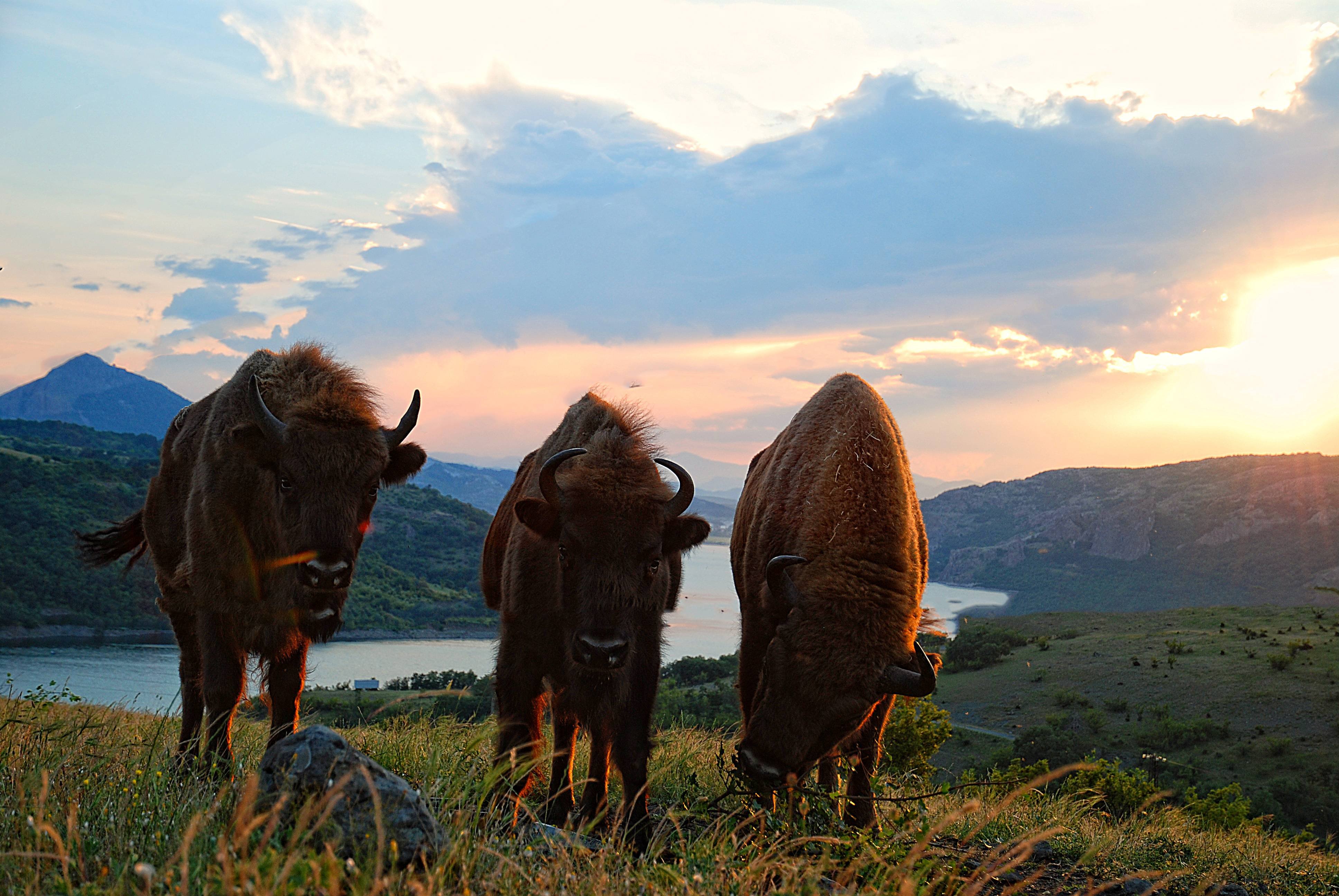The European bison (Bison bonasus), sometimes known as a wisent, is one of the animals that have been extremely close to extinction at some point. During the early 20th century all the wild European bisons in the wild were hunted to extinction, but luckily some were kept in captivity. These captive animals were used to reintroduce these animals to the wild, and since then they’ve been doing okay. They were considered to be an endangered species for a very long time, but has since been downgraded into the “vulnerable” category by the IUCN.
In the last 70 years, the European bisons have gradually been introduced into different parts of Europe, and they are now even found in some places that they have never lived before. The biggest population is found in Poland with over 1,400 bisons, but they’re also found in surprising places such as Denmark, The Netherlands and Spain.
All in all they're doing pretty good at the moment, and recently a wild bison migrated into Germany on its own..

A wild European bison in Poland. Image by Henryk Kotowski at English Wikipedia, posted with the Creative Commons Attribution-Share Alike 3.0 Unported license.
The first wild European bison in 250 years entered Germany a few days ago
Just over a week ago, a wild European bison entered Germany naturally for the first time in 250 years. It crossed the border from Poland where it crossed the river Oder near Lebus. It was repeatedly sighted in Lebus, which lead the local authorities to issue a kill order on the animal under 24 hours after it first arrived in the country. The reason was because they feared it could potentially harm the public. The bison was shot dead by two local hunters fairy quickly.
Germany already has a small population of European bisons, but these are not considered wild. They all live in the Rothaarsteig natural reserve, and there are currently 13 of them in the reserve. One would think that Germany would be excited about getting more bisons, but apparently they are not.
Conservationists and many other people have been enraged about the actions of the local authorities, and The World Wildlife Fund (WWF) have announced that they are filing charges against the government official who ordered the hunters to kill the bison.
Ironically the bison is not considered dangerous at all, so the decision to kill it have probably been without making any serious effort into checking if this was the best solution. In Poland the bisons are considered a national symbol, and people are not afraid to share their country with these animals.
Thanks for reading
Thanks for reading this sad story about the wild bison that entered Germany. Guess they don’t want to have a more diverse ecology over there. If you want to read more about it, check out this article by The Local, which I used as my main source for this post.
About the author
Hi, I’m @valth! I live in Norway with my wife, our baby, and our two dogs; one of which is seen wearing a bow tie in the profile picture!
I am very passionate about nature and biology, and have been studying ecology for a few years now. My passions are mostly within conservation biology, mycology (the studies of mushrooms), botany, animal behavior and general microbiology. I really enjoy both the theoretical aspect, as well as the more practical aspect of biology, and I spend about as much time in front of biology textbooks as I do spend on finding and identifying plant, mushroom and animal species in the forests.
Make sure to hit the big follow button above to go to my profile and follow me! This will make sure all of my posts end up right in your feed, and you can get your daily dose of biology news without any hassle :)


